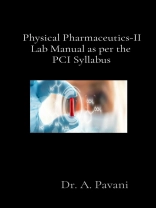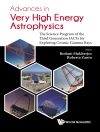1. Determination of particle size, particle size distribution using sieving method.
2. Determination of particle size, particle size distribution using microscopic method.
3. Determination of bulk density, true density and porosity.
4. Determination of angle of repose
5. Determination of influence of lubricant on angle of repose.
6. Determination of viscosity of liquid using Ostwald’s viscometer.
7. Determination of sedimentation volume with effect of different suspending agents.
8. Determination of sedimentation volume with effect of different concentrations of single suspending agent.
9. Determination of viscosity of semisolid by using Brookfield viscometer.
10. Determination of reaction rate constant first order.
11. Determination of reaction rate constant second order
12. Accelerated stability studies.
Aim: To determine the size distribution of particle in the given sample (Powder or granules).
Principle: Sieving method gives diameter, dsieve. Sieve diameter is defined as the diameter of a sphere that passes through the sieve aperture as the asymmetric particle.
Sieving method directly gives weight distribution. Standard sieves of different mesh numbers are available commercially as per the specification of IP and USP (Table no 1.1 and 1.2). Sieves are arranged in a nest with the coarsest at the top. A sample (50.0 g) of the powder (or granules) is placed on the top sieve. This sieve set is fixed to the mechanical shaker apparatus and shaker for a period time (20 minutes). The powder retained on each sieve is weighed. Then different size distribution curves are constructed.
Construction of Sieves: Sieves for pharmaceutical testing are constructed from wire cloth with square meshes, Woven from wire of brass, bronze, stainless steel or other suitable materials.
Factors Influencing the Sieving: Factors influencing sieving are weight of sample, duration of shaking and type of motion. The types of motion influencing sieving are vibratory motion (most efficient), side-tap motion, bottom pat motion (intensity) of the shaker is fixed and standardised. Care should be taken in order to get reproducible results
Applications: Sieving method finds applications in dosage form development of tablets and capsules. Normally, 15 percent of fine powder (passed through mesh 100) should be present in granulated material to get a proper flow of material and achieve good compaction in compressing tablets. Therefore, percent of coarse and fine powder can be quickly estimated.












